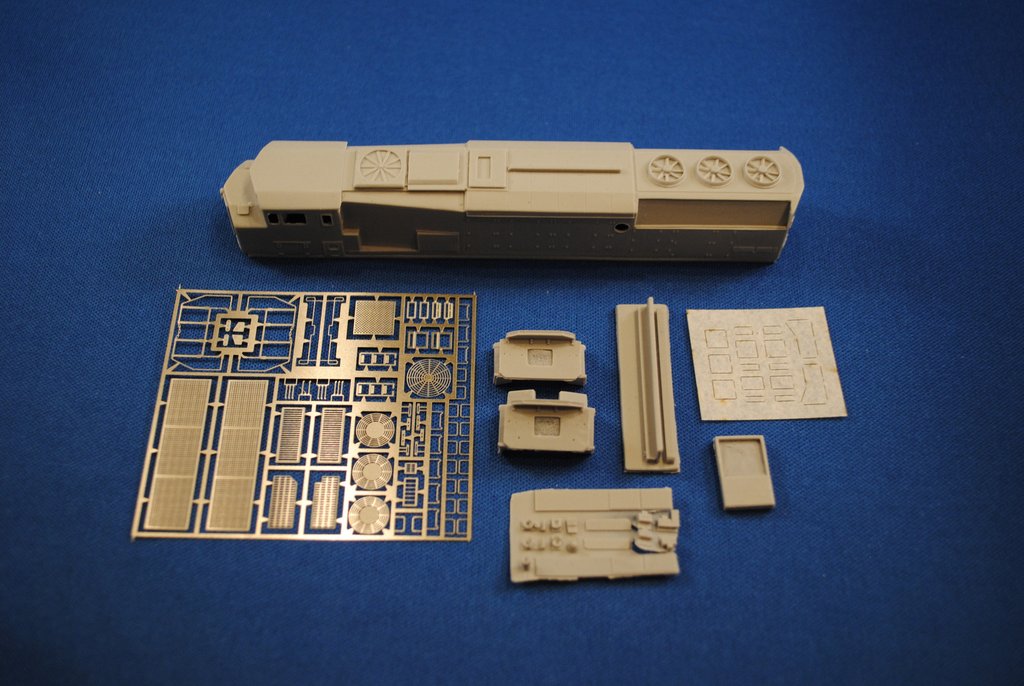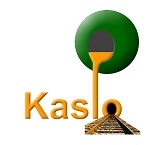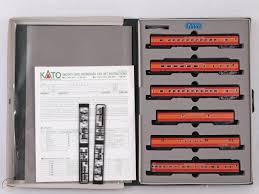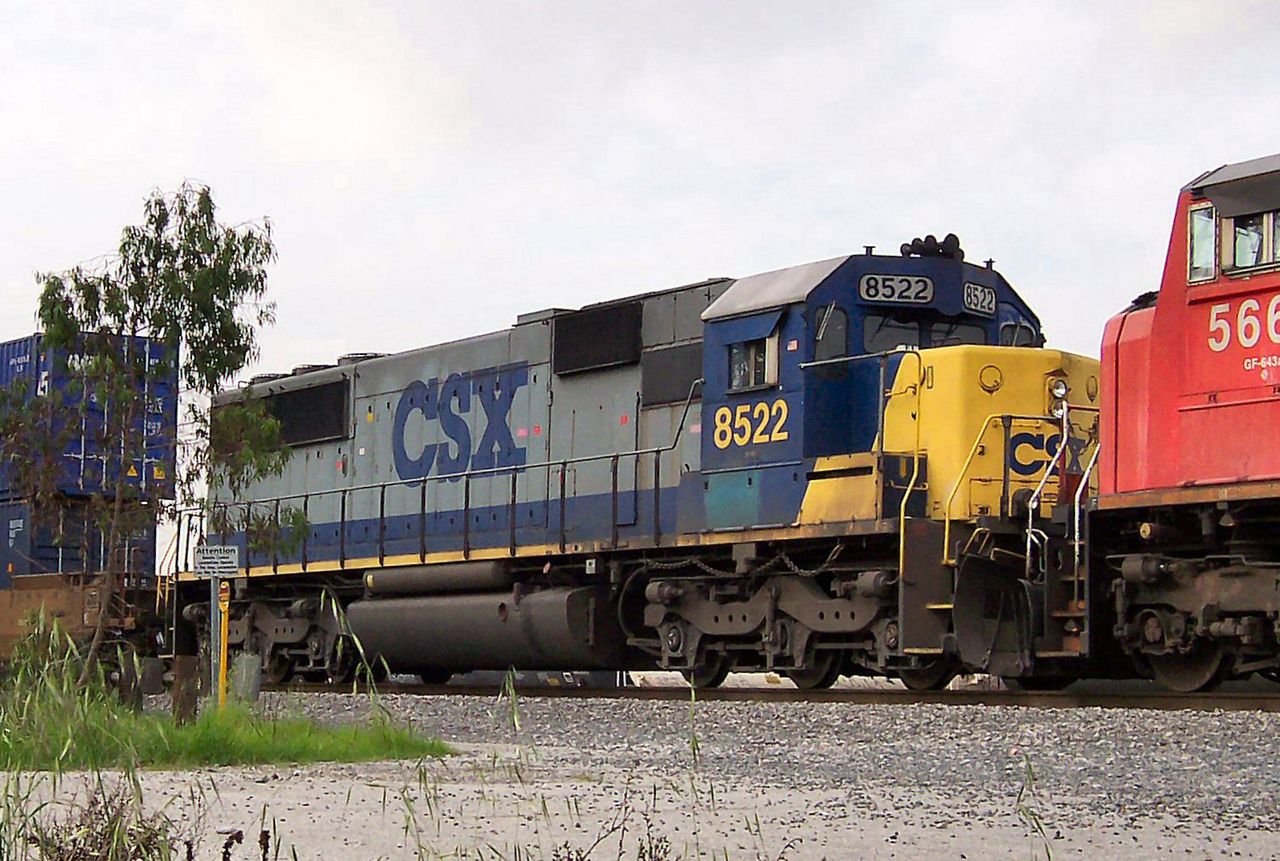Specific Item Information: Kit for modeling CN 5400-5459, 9900-9903 using an Atlas SD50 chassis.
Model Information: Locomotive body shell kits. These kits can be used with mechanisms such as: ????
Prototype History: The SD50 was produced in response to increasingly tough competition from GE Transportation Systems, whose Dash 7 line was proving quite successful with railroads. While EMD's SD40-2 was a reliable and trusted product, GE's line included locomotives up to 3,600 hp (2,685 kW) with more modern technology, as well as very competitive finance and maintenance deals. EMD responded throughout the SD50 program by offering discounts on large orders.
GM-EMD had previously produced 3,600 hp (2,685 kW) locomotives, the SD45 and later SD45-2, but these used huge, 20-cylinder engines with high fuel consumption, and had reliability problems when first introduced. Demand for the 45 series dropped sharply after the 1970s fuel crisis. The SD50 used an updated version of the V16 645 used in the SD40-2, uprated to 3,500 hp (2,600 kW)- and later 3,600 hp (2,685 kW) - at 950 rpm from 3,000 hp (2,240 kW) at 900 rpm. This proved to be a step too far; the 50 series models were plagued by engine and electrical system problems which harmed both sales and the reputation of EMD.
From Wikipedia
Read more on American-Rails.com
GM-EMD had previously produced 3,600 hp (2,685 kW) locomotives, the SD45 and later SD45-2, but these used huge, 20-cylinder engines with high fuel consumption, and had reliability problems when first introduced. Demand for the 45 series dropped sharply after the 1970s fuel crisis. The SD50 used an updated version of the V16 645 used in the SD40-2, uprated to 3,500 hp (2,600 kW)- and later 3,600 hp (2,685 kW) - at 950 rpm from 3,000 hp (2,240 kW) at 900 rpm. This proved to be a step too far; the 50 series models were plagued by engine and electrical system problems which harmed both sales and the reputation of EMD.
From Wikipedia
Read more on American-Rails.com
Road Name History: The Canadian National Railway Company (reporting mark CN) is a Canadian Class I railway headquartered in Montreal, Quebec that serves Canada and the Midwestern and Southern United States. CN's slogan is "North America's Railroad". CN is a public company with 24,000 employees. It had a market capitalization of 32 billion CAD in 2011. CN was government-owned, having been a Canadian Crown corporation from its founding to its privatization in 1995. Bill Gates was, in 2011, the largest single shareholder of CN stock.
CN is the largest railway in Canada, in terms of both revenue and the physical size of its rail network, and is currently Canada's only transcontinental railway company, spanning Canada from the Atlantic coast in Nova Scotia to the Pacific coast in British Columbia. Its range once reached across the island of Newfoundland until 1988, when the Newfoundland Railway was abandoned.
Following CN's purchase of Illinois Central (IC) and a number of smaller US railways, it also has extensive trackage in the central United States along the Mississippi River valley from the Great Lakes to the Gulf of Mexico. Today, CN owns about 20,400 route miles (32,831 km) of track in 8 provinces (the only two not served by CN are Newfoundland & Labrador and Prince Edward Island), as well as a 70-mile (113 km) stretch of track (see Mackenzie Northern Railway) into the Northwest Territories to Hay River on the southern shore of Great Slave Lake; it is the northernmost rail line anywhere within the North American Rail Network, as far north as Anchorage, Alaska (although the Alaska Railroad goes further north than this, it is isolated from the rest of the rail network).
The railway was referred to as the Canadian National Railways (CNR) between 1918 and 1960, and as Canadian National/Canadien National (CN) from 1960 to the present.
Read more on Wikipedia.
CN is the largest railway in Canada, in terms of both revenue and the physical size of its rail network, and is currently Canada's only transcontinental railway company, spanning Canada from the Atlantic coast in Nova Scotia to the Pacific coast in British Columbia. Its range once reached across the island of Newfoundland until 1988, when the Newfoundland Railway was abandoned.
Following CN's purchase of Illinois Central (IC) and a number of smaller US railways, it also has extensive trackage in the central United States along the Mississippi River valley from the Great Lakes to the Gulf of Mexico. Today, CN owns about 20,400 route miles (32,831 km) of track in 8 provinces (the only two not served by CN are Newfoundland & Labrador and Prince Edward Island), as well as a 70-mile (113 km) stretch of track (see Mackenzie Northern Railway) into the Northwest Territories to Hay River on the southern shore of Great Slave Lake; it is the northernmost rail line anywhere within the North American Rail Network, as far north as Anchorage, Alaska (although the Alaska Railroad goes further north than this, it is isolated from the rest of the rail network).
The railway was referred to as the Canadian National Railways (CNR) between 1918 and 1960, and as Canadian National/Canadien National (CN) from 1960 to the present.
Read more on Wikipedia.
Brand/Importer Information: Kaslo Shops Distributing was formed in 1998 in an effort to supply the modelling community with top quality parts and kits.
We specialize in:
- Detail Parts
- Locomotive Resin Kits
- Cab Kits
We are always looking for new ideas and new projects - please contact us with any suggestions or requested kits!
We specialize in:
- Detail Parts
- Locomotive Resin Kits
- Cab Kits
We are always looking for new ideas and new projects - please contact us with any suggestions or requested kits!
Item created by: Powderman on 2017-12-26 11:54:34. Last edited by CNW400 on 2020-06-10 12:45:26
If you see errors or missing data in this entry, please feel free to log in and edit it. Anyone with a Gmail account can log in instantly.
If you see errors or missing data in this entry, please feel free to log in and edit it. Anyone with a Gmail account can log in instantly.












